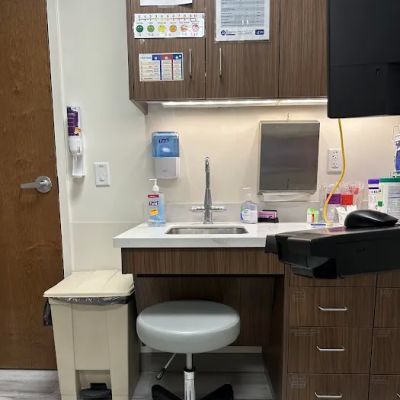Understanding Cholesterol: The Basics
Cholesterol is a type of fat that circulates in the bloodstream. While your body needs some cholesterol to function properly, having too much can lead to serious health issues. There are two types of cholesterol that are most commonly discussed: low-density lipoprotein (LDL), often referred to as “bad” cholesterol, and high-density lipoprotein (HDL), known as “good” cholesterol. The balance between these two types plays a key role in your cardiovascular health.
LDL cholesterol can build up in the walls of your arteries, forming plaques that restrict blood flow. This increases the risk of heart disease and stroke. On the other hand, HDL cholesterol helps to remove LDL from your bloodstream, thus protecting your heart. Understanding the relationship between your diet and cholesterol levels is crucial for maintaining heart health.

How Your Diet Affects Cholesterol Levels
Your diet plays a significant role in determining your cholesterol levels. What you eat can either increase or decrease your cholesterol levels, depending on the types of foods you consume. Certain foods, particularly those high in saturated fats, trans fats, and cholesterol, can raise your LDL levels. On the other hand, foods rich in fiber, healthy fats, and antioxidants can help lower cholesterol and promote heart health.
Dr. Denise Dietz
denise dietz
7001 Forest Ave Suite 200, Richmond, VA 23230, USA

Foods That Increase Cholesterol
Some foods are known to contribute to high cholesterol levels. These include:
- Processed meats: Bacon, sausages, and hot dogs contain high levels of saturated fats that can raise LDL cholesterol.
- Fried foods: Foods that are deep-fried or prepared with hydrogenated oils contain trans fats, which can increase bad cholesterol.
- Full-fat dairy products: Whole milk, butter, cheese, and cream are high in saturated fats and can contribute to higher LDL levels.
- Baked goods: Many store-bought cookies, cakes, and pastries contain trans fats, which are harmful to your cholesterol levels.
A diet rich in these foods can lead to an unhealthy balance of LDL and HDL cholesterol, raising the risk of heart disease over time. To lower cholesterol effectively, it’s essential to limit or avoid these items in your diet.
Foods That Help Lower Cholesterol
There are many foods that can actively help lower your cholesterol levels. These foods are typically rich in fiber, healthy fats, and plant sterols, which can help improve your cholesterol profile:
- Oats and barley: Whole grains are high in soluble fiber, which helps to reduce LDL cholesterol.
- Nuts and seeds: Almonds, walnuts, chia seeds, and flaxseeds contain healthy fats that promote better cholesterol levels.
- Avocados: This creamy fruit is rich in monounsaturated fats, which help lower LDL cholesterol while boosting HDL levels.
- Fatty fish: Salmon, mackerel, and sardines are high in omega-3 fatty acids, which can lower LDL cholesterol and raise HDL levels.
- Fruits and vegetables: Many fruits and vegetables, such as apples, berries, and leafy greens, are packed with antioxidants and fiber that support heart health.
- Legumes: Beans, lentils, and chickpeas are excellent sources of soluble fiber, which helps lower cholesterol.
Incorporating these foods into your diet can have a positive impact on your cholesterol levels and overall heart health. For example, replacing unhealthy fats with heart-healthy monounsaturated and polyunsaturated fats can help reduce LDL levels while improving HDL cholesterol.
Tips for Managing Your Cholesterol Through Diet
Along with choosing the right foods, there are several dietary strategies you can follow to keep your cholesterol levels in check:
1. Focus on Fiber
Increasing your intake of soluble fiber is one of the most effective ways to lower LDL cholesterol. Soluble fiber binds to cholesterol in the digestive system, helping to remove it from the body. Aim to include a variety of fiber-rich foods, such as oats, beans, fruits, and vegetables, in your daily meals.
2. Choose Healthy Fats
Not all fats are created equal. While saturated and trans fats can raise LDL cholesterol levels, unsaturated fats can help lower them. Opt for healthy fats found in foods like olive oil, avocado, and fatty fish. Replace butter and lard with healthier alternatives to improve your cholesterol levels.
3. Limit Cholesterol-Rich Foods
While dietary cholesterol doesn’t have as big an impact on blood cholesterol for most people, it’s still a good idea to limit foods that are high in cholesterol, such as red meat and full-fat dairy products. Instead, focus on plant-based proteins like beans and lentils, and choose lean meats and low-fat dairy options.
4. Watch Portion Sizes
Even healthy foods can contribute to high cholesterol if consumed in excessive amounts. It’s important to be mindful of portion sizes, especially when eating higher-calorie foods like nuts, seeds, and fatty fish. Moderation is key to maintaining a healthy weight and cholesterol level.
5. Drink Green Tea
Green tea is rich in antioxidants, including catechins, which have been shown to help lower cholesterol levels. Sipping a cup of green tea daily could be an easy addition to your heart-healthy routine.
Cholesterol-Lowering Recipes to Try
Here are a couple of heart-healthy recipes you can try that are both delicious and beneficial for managing cholesterol:
Avocado and Chickpea Salad
This refreshing salad is packed with fiber and healthy fats. It’s perfect for a light lunch or a side dish:
- 1 ripe avocado, diced
- 1 can chickpeas, drained and rinsed
- 1 cup cherry tomatoes, halved
- 1/2 cup red onion, finely chopped
- 2 tablespoons olive oil
- 1 tablespoon lemon juice
- Salt and pepper to taste
Simply toss all ingredients together in a large bowl and enjoy! This dish is rich in heart-healthy fats, fiber, and antioxidants.
Salmon and Quinoa Bowl
This meal is rich in omega-3 fatty acids and fiber, making it perfect for improving your cholesterol levels:
- 1 salmon fillet
- 1/2 cup cooked quinoa
- 1 cup steamed broccoli
- 1 tablespoon olive oil
- 1 tablespoon lemon juice
- Salt and pepper to taste
Simply grill or bake the salmon, and serve it with quinoa and steamed broccoli. Drizzle with olive oil and lemon juice for added flavor.
Conclusion
Your diet plays a crucial role in managing your cholesterol levels. By making simple changes to what you eat, you can significantly improve your heart health and reduce your risk of cardiovascular disease. Focus on eating foods that are high in fiber, healthy fats, and antioxidants, and limit those that are high in unhealthy fats and cholesterol. With a little effort, you can take control of your cholesterol and enjoy a healthier, happier life.





















Dr. Juan Mendieta Hernandez
doctor mendieta reviews
277 Pleasant St, Fall River, MA 02721, USA